Recent Articles
Popular Makes
Body Types
10 Coolest Japanese Station Wagons

2017 Subaru Impreza wagon ・ Photo by Subaru
Japanese cars have a reputation for building some of the most reliable and longest-lasting vehicles on the road, and Japanese station wagons are no different. Though there are only a few new models left on the market today (a situation that isn’t unique to Japanese manufacturers, as wagons lost their popularity and SUVs became the people haulers of choice), there are also a few good buys if you’re willing to buy used. So if you’re looking for a cool family car that’s more fun to drive, more economical, and almost as practical as an SUV (or the dreaded minivan), read on to discover Autobytel’s list of what we believe to be te 10 coolest Japanese station wagons.
Acura TSX Wagon
The Acura TSX Sport Wagon was available from the 2011 to 2014 model years, and uses the same 4-cylinder engine, automatic transmission and front-wheel drive layout as the regular TSX sedan. It also shares the sedan’s nimble handling, making it much more entertaining to drive than, say, a minivan or SUV. There’s plenty of room for normal-sized adults even in the back, and 31.5 cubic feet of cargo space behind the rear seats (or 66.2 cubic feet with the seats folded down). The TSX Sport Wagon’s practicality and fun factor earn it a spot on our list of 10 Japanese station wagons. It's just too bad it never came with a V6 or a manual.
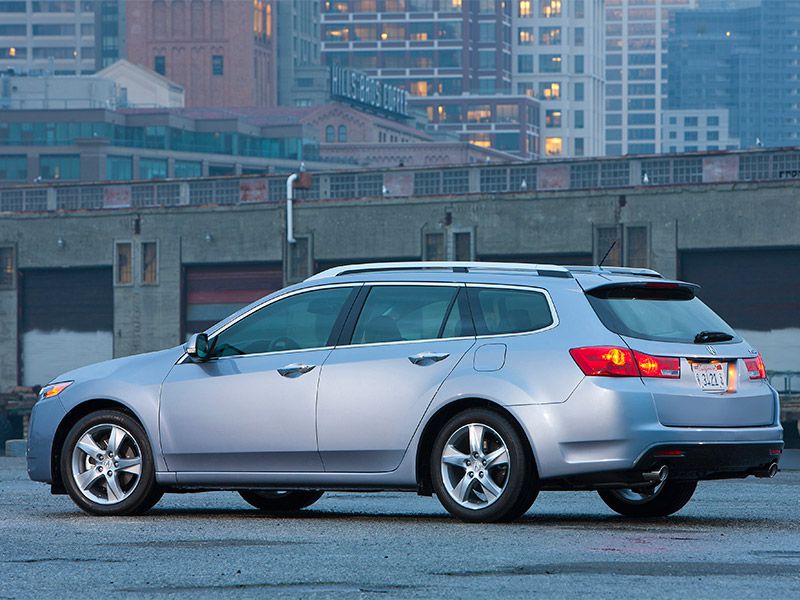
Photo by Acura
Honda Crosstour
Production of the Honda Crosstour (also known as the Honda Accord Crosstour for 2010 and 2011) lasted from the 2010 to 2015 model years. Both 4-cylinder and V6 models were offered, with the V6 also available in all-wheel drive, but none of the models were particularly sporty and handling was a bit of a disappointment. The Crosstour’s sloping roofline also limits its versatility, with only 25.7 cubic feet of cargo space behind the rear seats (and 51.3 cubic feet with the seats folded down). There is plenty of space in the rear for adults, but again, the sloping roofline comes into play, making access difficult.
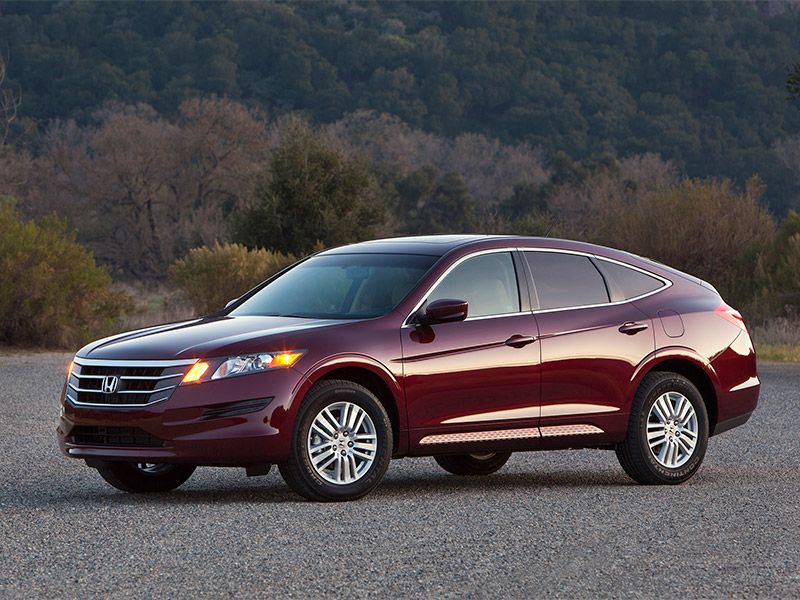
Photo by Honda
Honda Accord Wagon
The Honda Accord Wagon was last available for the model’s fifth generation, which ran from 1994 to 1997. Only 4-cylinder engines were available in the wagon, though a manual transmission was offered for some years. With 25.7 cubic feet of cargo space behind the rear seats (and 63.3 cubic feet with the rear seats folded) the Accord provides quite a bit of cargo space for the car’s exterior size (park a fifth-generation Accord next to the current version and the difference in size is striking). If you’re looking for a practical, economical, and reliable car, the Accord wagon should fit the bill, if you can still find one in decent shape.
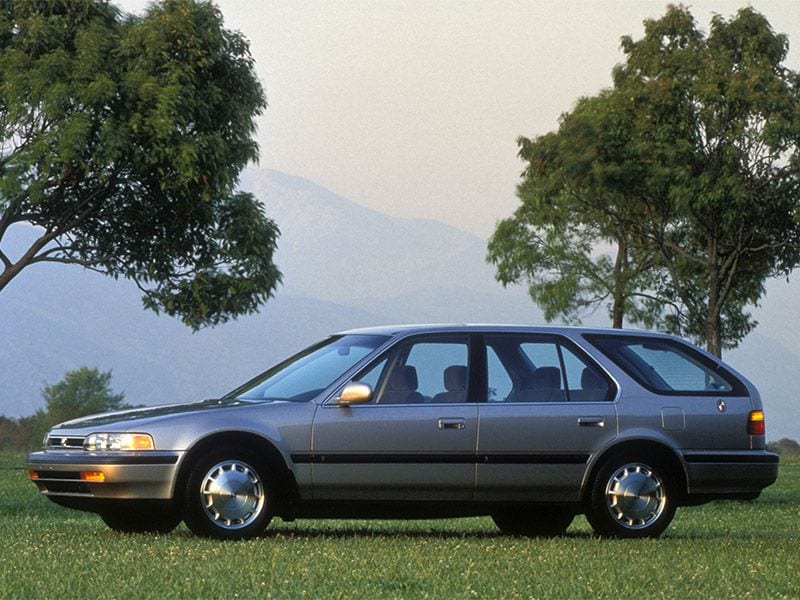
Photo by Honda
Lexus IS 300 Wagon
The 2002 to 2005 Lexus IS 300 SportCross is a more practical version of the regular IS 300, with the same smooth inline-6 engine and rear-wheel drive layout, and nearly the same excellent handling (though unfortunately without the manual transmission option). Like every model since the Lexus brand’s inception, the quality, fit and finish, both inside and out, are exemplary. Inside the space is a bit tight, especially in the rear, though you do get 21.9 cubic feet of cargo space behind the back seats (40 cubic feet with the rear seats folded down, and even the front passenger seat folds, allowing lots of space for longer cargo).
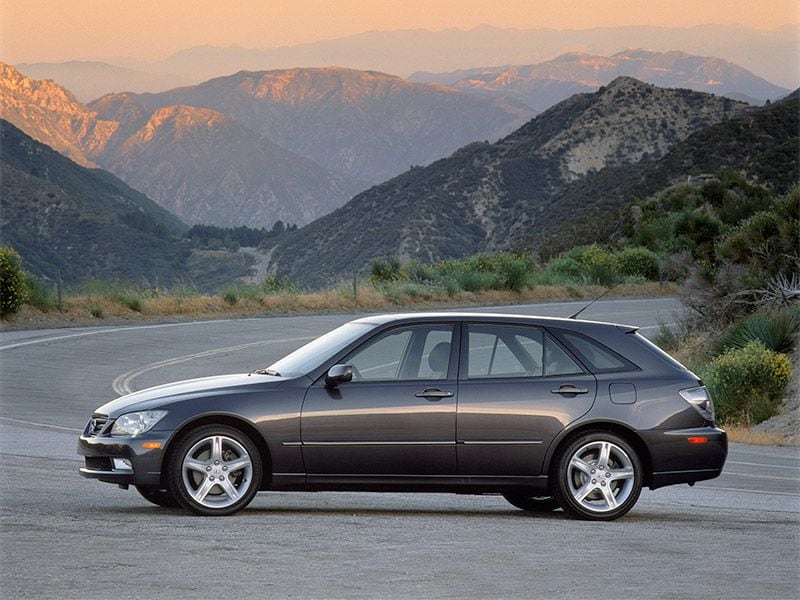
Photo by Lexus
Mazda Protegé Wagon
The Mazda Protegé5 had a short lifespan, running only for the 2002 and 2003 model years. Like many of Mazda’s models, the 4-cylinder engine seems a bit underpowered, at least until you start leaning on the car’s suspension to help get you through the corners without slowing down, and thankfully, both manual and automatic transmissions were offered. The suspension is tuned for good handling, but the tradeoff of the firm suspension is a ride that can get a bit harsh on rough roads. The Protegé5 is certainly more practical than the sedan, with 19.8 cubic feet of cargo space available behind the rear seats (which jumps to 38 cubic feet with the rear seats folded).
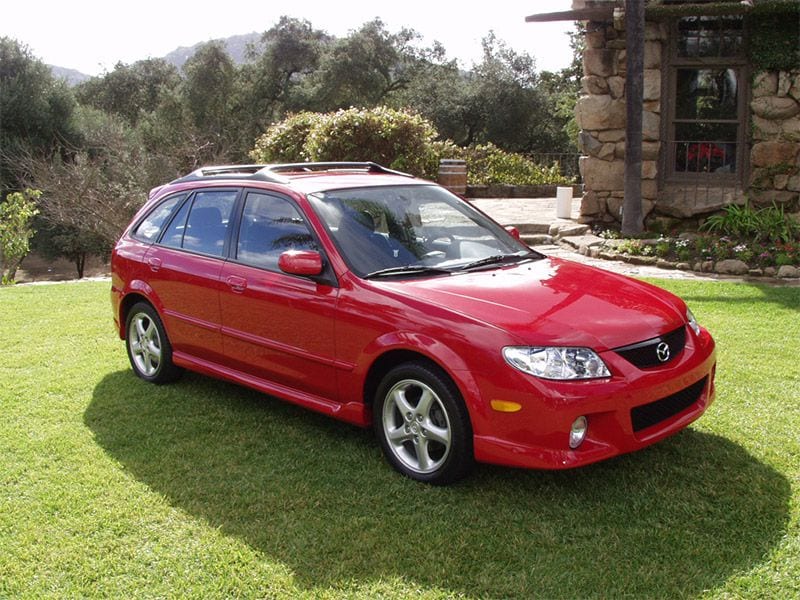
Photo by Mazda
Mitsubishi Lancer Sportback
The Mitsubishi Lancer Sportback wagon was available in North America for the 2004 to 2006 model years, though it was only sold in the United States for a part of that time. Despite the suggestive model name, all models came with a normally-aspirated 4-cylinder engine and an automatic transmission. Regardless, the Lancer Sportback is relatively fun to drive, and there is plenty of room inside for passengers and cargo alike, with 24.9 cubic feet of cargo room behind the rear seats (or a generous 60.7 cubic feet with the rear seats folded). A newer Lancer Sportback is currently on the market, but it’s more of a hatchback than a wagon.

Photo by Mitsubishi
Nissan Cube
The Nissan Cube first arrived on our shores for the 2009 model year, and was available until 2014. All versions are powered by a fairly lethargic and not exceptionally economical 4-cylinder engine that was available with either a continuously variable or manual transmission. The ride is smooth but not sporty, with quite a bit of body roll. The tall, boxy design means that there’s plenty of room for tall adults, even in the rear, though cargo space is a relatively minuscule 11.4 cubic feet behind the rear seats (though that does grow to a very usable 58.1 cubic feet with the rear seats folded down).
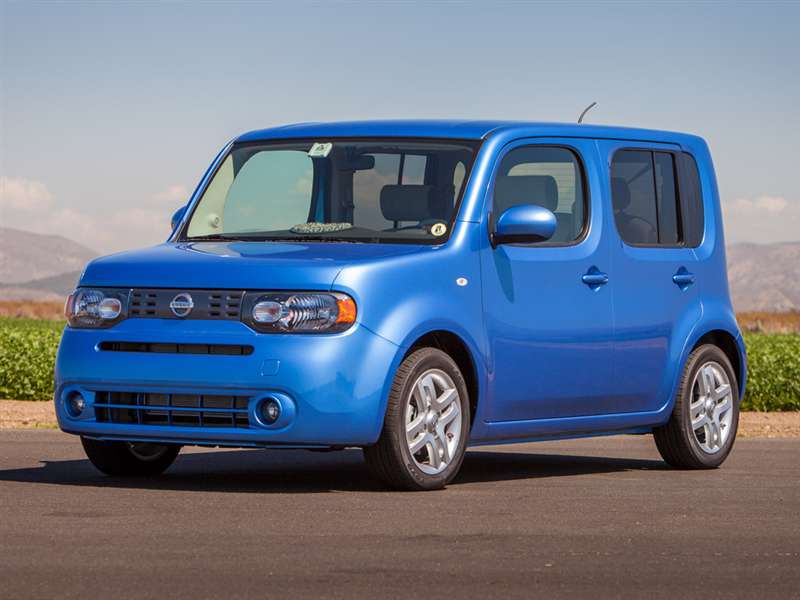
Photo by Nissan
Subaru Impreza
The Subaru Impreza 5-door is one of the few vehicles on our list of Japanese station wagons that is still available new, and it was just updated for 2017. Like nearly all of Subaru’s vehicles, the Impreza uses all-wheel drive to ensure that the power from its 4-cylinder engine gets to the ground, but unfortunately the sporty WRX and STI models are no longer offered in the 5-door variety. Thankfully, even the normally-aspirated models are quite fun to drive (even if they aren’t especially quick), especially when equipped with the manual instead of the continuously variable transmission. Cargo volume is 20.8 cubic feet behind the rear seats (or 55.3 cubic feet with the seats folded down).
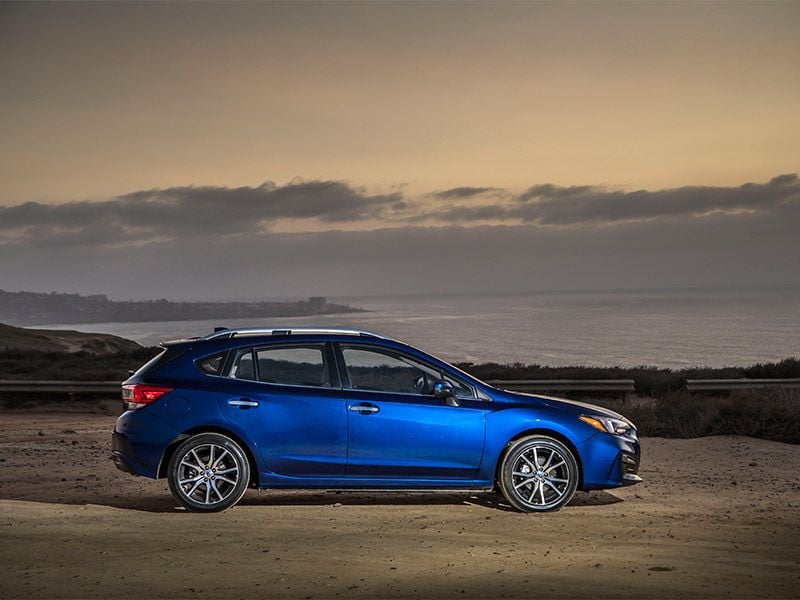
Photo by Subaru
Subaru Outback
The Subaru Outback is basically a lifted and ruggedized wagon version of the Subaru Legacy, and one of the few vehicles on our list of Japanese station wagons still on the market, having last been updated for the 2016 model year. The Outback is available with either flat-4 or flat-6 engines, both of which are paired with a continuously variable transmission (unless you visit Canada, where a manual transmission is available). The high ride height means that handling isn’t sporty, but it is secure and the ride is good. The Outback is supremely practical, with 35.5 cubic feet of cargo space behind the rear seats, and a massive 73.3 cubic feet with the rear seats folded.
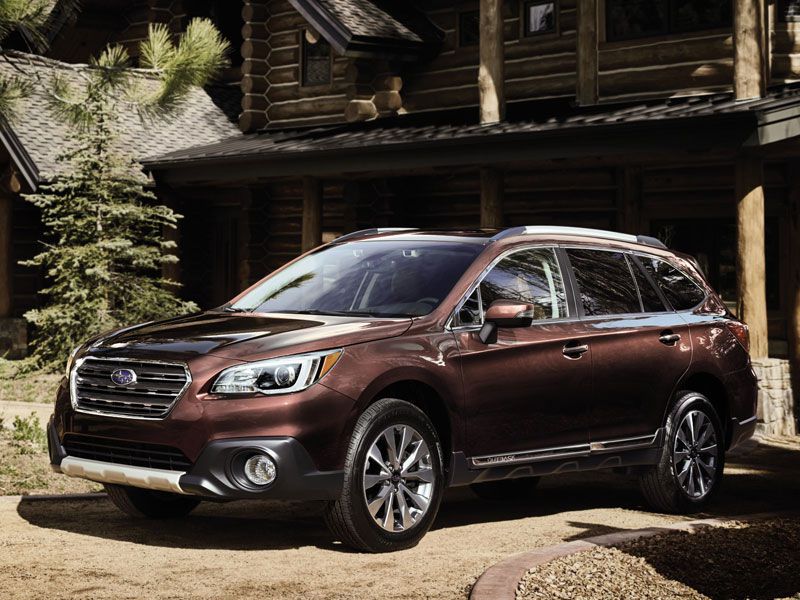
Photo by Subaru
Toyota Prius V
First introduced for the 2012 model year, the Toyota Prius V is one of the few Japanese station wagons left on the market, and it has a few tricks up its sleeves. The hybrid powertrain uses a combination of a 4-cylinder Atkinson cycle engine and an electric motor to deliver both excellent fuel economy and (barely) acceptable performance. The Prius V has a comfortable ride and plenty of room for passengers, along with 34.3 cubic feet of cargo space when the rear seats are occupied. The rear seats can also slide forward to provide 40.2 cubic feet of space (or folded down to provide 67.3 cubic feet).
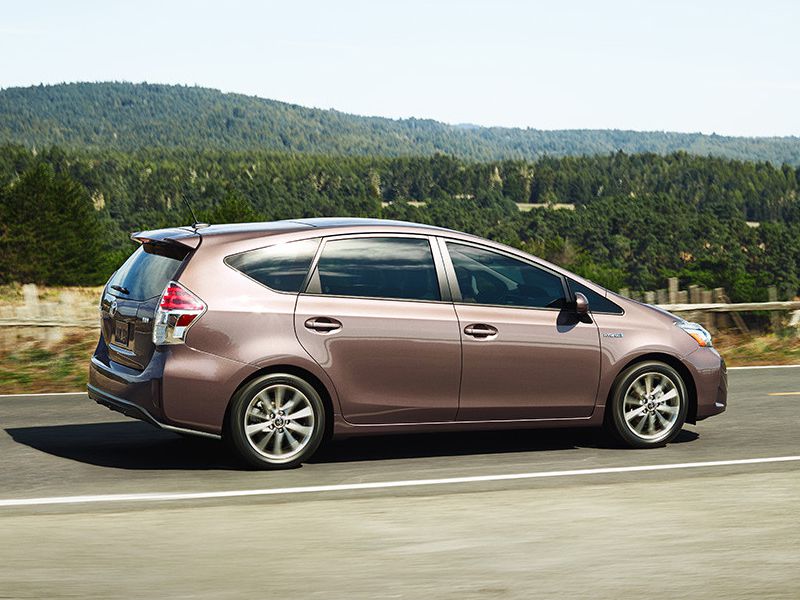
Photo by Toyota